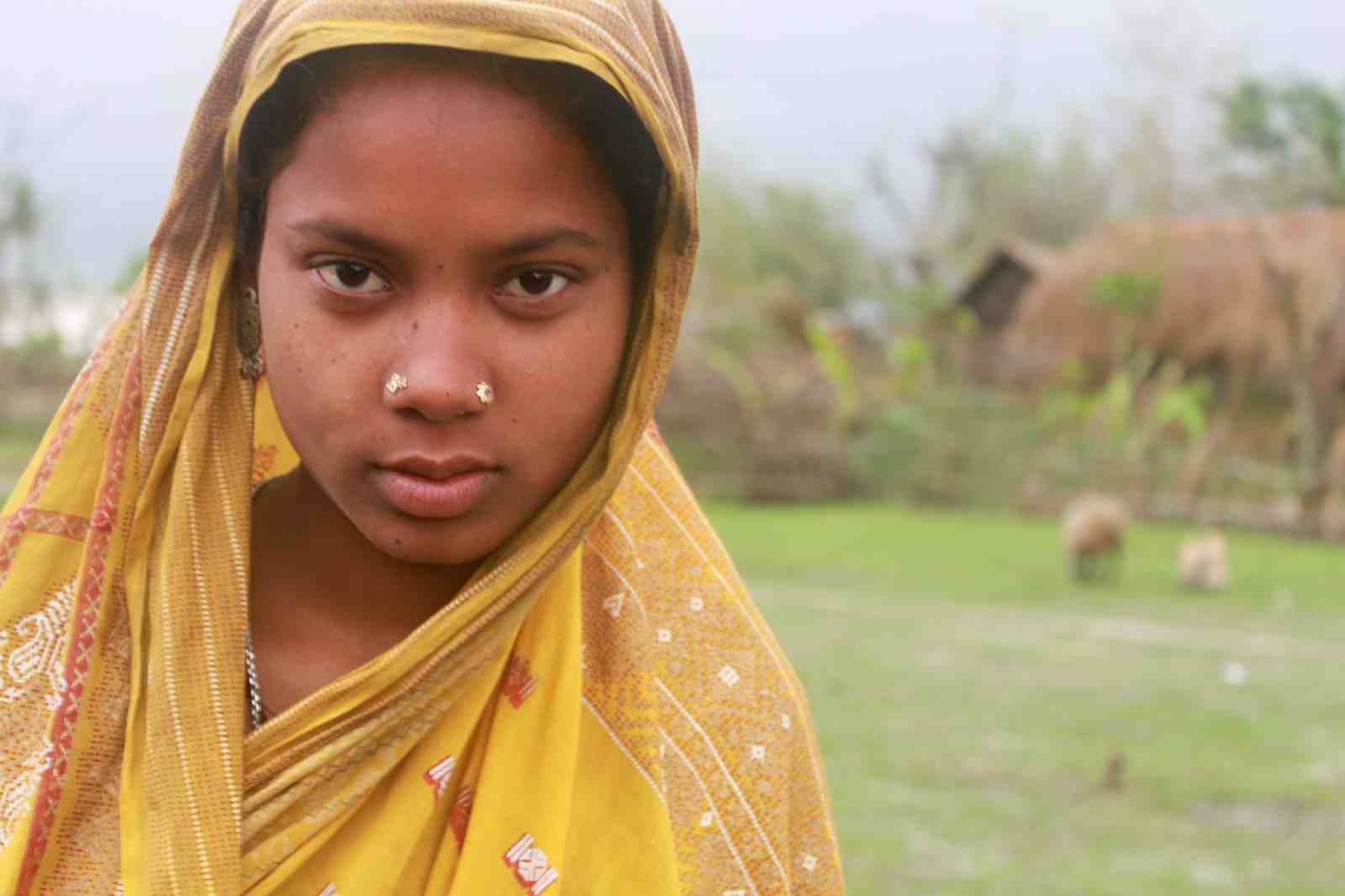Growing up in a small village in northeastern India, Hasina Khatun spent her days helping her aunt around the house and playing with her siblings. She did not drop out of school; she never started. Hasina began menstruating at the age of 13 and soon after her aunt, who raised her after her mother died, told her it was time to get married. Hasina did not understand what her aunt meant, or that her life was about to change dramatically.
"I thought marriage was a game," Hasina says as she sits in a bamboo home in her husband's village. She fidgets with her orange, black and green sari that covers her head and falls over her breasts, unusually big for her tiny frame. Hasina is now 15 and five months pregnant.
Nearly half of girls in India are married before they turn 18, according to the International Center for Research on Women, making India home to a third of the world's child brides. In India, there is often social pressure on women to give birth soon after marriage to prove their fertility. Child brides like Hasina — even though their bodies are often too small and undeveloped to handle the burden of a pregnancy — are no exception.
Child marriage increases the chances of a maternal death due to an increase in the likelihood of pregnancy complications combined with lack of knowledge about maternal health, lack of control over medical decisions and lack of access to timely and adequate health care. A girl who gives birth under the age of 15 is five times more likely to die in pregnancy or childbirth than a woman in her 20s, according to the United Nations Population Fund. Girls 15 to 19 are twice as likely to die.
After decades of neglect, the Indian government began to prioritize maternal health in 2005 and embarked on an effort to reduce its maternal mortality rate through its National Rural Health Mission. India contributes almost a quarter of the world's maternal deaths, at least 70,000 deaths each year. A commitment to reduce the number of women and girls who die from pregnancy, labor or post-pregnancy causes comes as countries face growing pressure to meet the Millennium Development Goals set by the international community. Improving women's reproductive health and reducing maternal mortality is one of eight goals U.N. member states including India have agreed to achieve by 2015.
Nationwide, India's maternal mortality rate has dropped from 677 deaths per 100,000 live births in 1980 to 254 in 2008, according to a study published in the British medical journal The Lancet in April.
However, despite improvements among some segments of the population, there are great disparities within the country. Factors related to education, caste, religion, income and geographic region reflect the nation's socio-economic diversity and lead to differences in the status of maternal health.
Assam, where Hasina lives, has been plagued by decades of underdevelopment, unrest and corruption and has the country's highest rate of maternal mortality at 480 deaths per 100,000 live births, according to government statistics.
While India has made progress with maternal health targets that are more easily achievable, like in encouraging more women to give birth in medical facilities, its biggest challenge now is to address the difficult cases. And of these, mothers like Hasina are among the hardest to reach and help.
When Hasina was 13 her aunt told her she would marry Islam Ali, a young man who also never went to school. As a teenager, Islam worked as a day laborer on other people's fields in Dibrugarh, a district in upper Assam known for its beautiful tea plantations.
When Islam was 19, his mother fell sick, he says through a translator as he sits inside a one-room bamboo home in his village. A farming hoe leans against a wall near the door, and a collection of men's pants and women's saris rest on a wooden rod. Islam speaks in Bengali, and his words are translated into Assamese and then English.
With his mother unable to perform her household duties, Islam's father decided his son should move back to their village and get a wife to look after the family. Islam's father worked out with Hasina's family the deals of the marriage.
Hasina's aunt then explained to the 13-year-old that she would have to leave her family and friends and move to her new husband's village, which is on an island on the Brahmaputra River in lower Assam...
Read the full story and view related photos at Global Post.


















